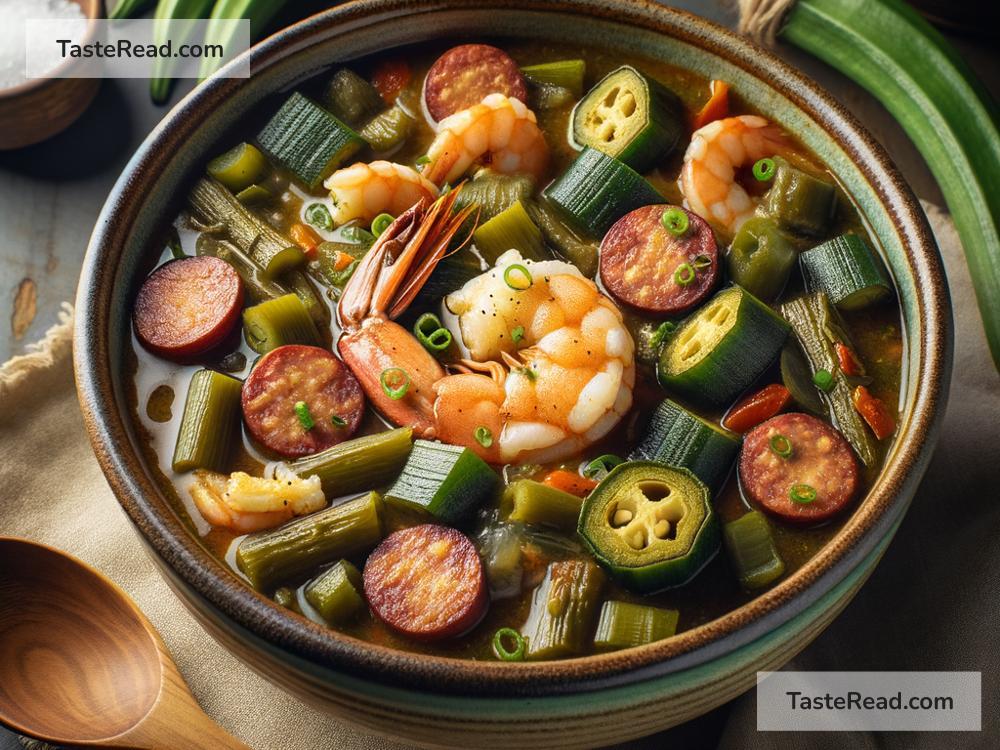The Curious Role of Okra in Gumbo Recipes
Gumbo is one of the most famous dishes in Southern cooking, especially in Louisiana. With its rich flavors and hearty ingredients, it represents a blend of cultures and culinary traditions. Making gumbo is often like storytelling; each ingredient tells a piece of history. One of the curious and most debated ingredients in gumbo is okra. Love it or hate it, this green vegetable has played an important role in gumbo recipes for generations.
What is Gumbo?
Before we dive into the role of okra, let’s talk about gumbo itself. Gumbo is a thick stew often made with meat, seafood, vegetables, and a variety of spices. It’s traditionally served over white rice, making it a filling and comforting meal. What makes gumbo special is the way it combines French, African, Spanish, and Native American flavors and techniques, reflecting Louisiana’s diverse heritage.
There are many types of gumbo, but they generally fall into two categories: Creole gumbo and Cajun gumbo. Creole gumbo tends to include tomatoes, while Cajun gumbo typically does not. No matter which version you prefer, gumbo is rooted in rich tradition—and okra plays a fascinating role in this dish.
What Is Okra?
Before diving into its role in gumbo, let’s talk a bit about okra itself. Okra is a green vegetable that grows in warm climates. It is long and slender, with ridges running down the sides. What makes okra unique is its slightly “slimy” texture when cooked—it releases a gooey substance that can thicken soups and stews.
Okra is believed to have originated in Africa. It was brought to the Americas during the transatlantic slave trade and has since become a staple in Southern cuisine. Its African roots make it a historically significant ingredient in many dishes, especially gumbo.
Okra’s Role in Gumbo
One of the reasons okra is so strongly associated with gumbo is its thickening ability. Gumbo needs to be thick and hearty, and okra is one of the ingredients traditionally used to achieve this texture. When cooked, okra releases a natural substance called mucilage, which helps thicken the stew. This is why many older gumbo recipes include okra as a key ingredient.
But okra isn’t just about thickening gumbo—it also adds flavor and texture. When cooked until tender, okra becomes slightly creamy and adds a mild, earthy taste to the dish. Some gumbo lovers say that without okra, gumbo just isn’t the same!
Why Is It Called Gumbo?
Interestingly, the word “gumbo” itself is connected to okra. The term is believed to come from the African word “ki-ngombo” or “quingombo,” which means okra. This connection highlights okra’s role in the early versions of gumbo. In fact, gumbo originally referred to okra-based soups and stews before the dish evolved into the many variations we see today.
A Controversial Ingredient
While okra has a strong historical connection to gumbo, not everyone agrees that it belongs in modern recipes. Some people dislike okra’s slimy texture and go out of their way to avoid it. Over the years, chefs and home cooks have found other ways to thicken gumbo, such as using roux (a mixture of flour and fat) or filé powder (ground sassafras leaves). These alternatives allow cooks to skip okra altogether, leading to a heated debate among gumbo enthusiasts: Is okra essential for authentic gumbo?
The answer depends on who you ask. For some, gumbo simply isn’t gumbo without okra. For others, leaving out okra is perfectly fine, as long as the dish is flavorful and hearty. This debate highlights how gumbo recipes have evolved over time while still holding onto their cultural roots.
Tips for Using Okra in Gumbo
If you want to include okra in your gumbo, here are a few tips to get the most out of this curious ingredient:
-
Choose Fresh Okra: Freshly picked okra has the best flavor and texture. Look for pods that are bright green and firm.
-
Cook It Properly: To reduce okra’s sliminess, try sautéing it in oil before adding it to your gumbo. This simple step helps seal the mucilage and makes the vegetable less gooey.
-
Pair It with Bold Flavors: Okra works well with the bold spices in gumbo, like cayenne and paprika. It absorbs the flavors of the dish and adds its own subtle taste.
Okra as Tradition
Whether or not you personally like okra, it’s impossible to ignore its historical and cultural importance in gumbo. Okra represents the African influence on Southern cooking and reminds us of how food connects us to the past. Including okra in gumbo recipes is a way to honor tradition and celebrate the diversity of flavors that make Louisiana cuisine so special.
Conclusion
The curious role of okra in gumbo recipes tells a story of history, culture, and culinary creativity. While not everyone agrees on whether okra belongs in gumbo today, there’s no denying its impact on this beloved dish. Whether you embrace its slimy texture or prefer a roux-based gumbo, one thing remains true: Gumbo is a dish that brings people together, one flavorful bite at a time.


